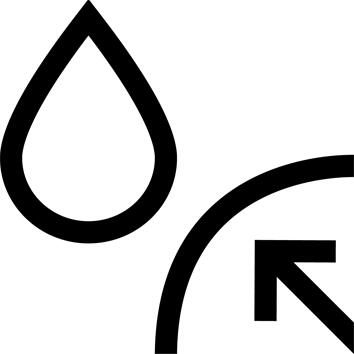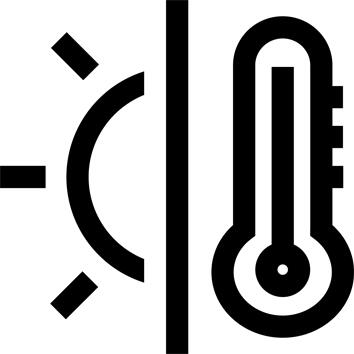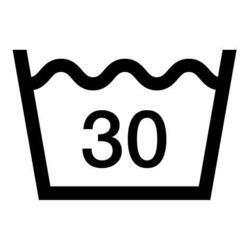Cutting information
Parka shape. Standard cut. Inner volume enables this jacket to be worn with a very warm 2nd layer, such as a sleeveless down jacket or a technical wadding jacket.
Are the hood and fur detachable?
The hood is detachable with snap fasteners. It features a removable synthetic fur trim. Its storm shape is very enveloping and protective. It is adjustable in height by means of an elastic cord and tanka, and in depth by means of a Velcro fastening at the back of the head. As a result, the volume can be adapted to complement a warm hat or chapka.
It is waterproof, with all seams taped.
WATERPROOF JACKET
The waterproofness of a jacket is not limited to that of its components: the technique used to assemble the various parts is also an assessment criterion.
Whether thermally bonded or sewn and then waterproofed, the overall waterproofness of your jacket is measured using a shower test developed by Decathlon, which simulates rainfall of different intensities.
So this waterproof jacket protects you from a downpour, i.e. 12 cm of rain in 2 hours.
WATERPROOF JACKET COMPONENTS
The impermeability of a fabric, ensured by a coating or membrane, is measured in Schmerber or mm H²0 (pressure exerted by a column of water). The higher the number, the more waterproof the fabric.
This jacket features a waterproof component (JIS 1092 standard) resistant to 10,000 mm H²0 (Schmerber) before washing.
What's the purpose of each pocket?
On the outside:
- 2 warm pockets lined with fleece to keep hands warm
- 2 deep flap pockets with snap fasteners for hats and small water bottles
- 2 large chest pockets with waterproof zips for items that need to be protected from the rain
- 1 shoulder pocket with flap for sun cream, for example.
Inside, we have:
- 2 large mesh pockets, ideal for storing gloves
- 1 phone pocket
How does this jacket protect me from the cold?
In addition to its generous down/duck feather filling, the bottom of the jacket is tightened with an elastic drawcord, and tankas keep cold air ingress to a minimum.
This parka also features integrated Lycra sleeves to prevent heat loss.
The high collar of this parka will also give you a feeling of warmth and protection around the neck. Finally, the central fastening is protected by a padded flap to keep the wind out.
An improved locking system thanks to your feedback!
The jacket was originally designed with a central double-slider zip that could be opened from 2 sides. You told us that this zipper was difficult to handle and fragile. We've improved on this point, replacing it with a heavy-duty, single-slider central zip for easier handling.
How the recommended laboratory temperature is measured.
We tested the jacket's thermal neutrality (neither hot nor cold) in the laboratory. As a result, we were able to determine that the jacket provides protection down to -20 degrees.
In accordance with the ISO 11079 standard, we observed the following conditions: 5 km/h walking, no wind and no sun. Jacket worn in combination with top: long-sleeved t-shirt, shirt and sleeveless down vest; bottom: tights, underpants and pants as well as a chapka.
Component breathability
Pour savoir si un tissu est respirant, on mesure sa résistance évaporative ou RET (test basé sur la norme ISO 11092). Plus la résistance est faible, plus le tissu laisse s’échapper la vapeur d'eau générée par le corps en activité, donc plus il est respirant. Par exemple : RET < 9 = tissu extrêmement respirant / 920 = tissu peu ou pas respirant.
Quantity of feathers at the waist
Here is the amount of feather per parka size.
XS = 372 g
S = 452 g
M = 472 g
L = 500 g
XL = 516 g
XXL = 551 g
XXXL = 580 g
The advantages of duck down and feather filling
The loft and durability of down give it 3 qualities for hiking:
- Thermal insulation thanks to the air trapped in the down and feathers
- Ultra-lightness: for equal warmth, down is lighter than synthetic wadding. This saves even more weight in the backpack
- Ultra compressibility
Why is the hood made of wadding instead of feathers?
We know that the thermal performance of wadding is not impaired when wet. That's why we used wadding in our hood. Indeed, if you lose the open hood in a shower, the inner component is not waterproof, so the hood will soak up water. A feather hood would quickly lose its thermal capacity. Not so with wadding!











